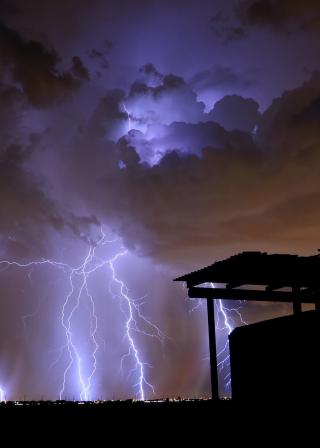The hydrologic cycle involves the two great engines of the planet - the ocean and the atmosphere both powered by heat from the sun. Both the ocean and atmosphere absorb solar energy and convey that energy to the land or back to the ocean. The everyday operation of these processes can be called weather, while the long-term variations in weather are called climate. This chapter will teach you about some of the fundamentals of Arizona's weather and climate. They serve as a cornerstone to understanding how watersheds work. First, we need to make some important distinctions. Weather brings us our surface water (or that not already deposited thousands of years ago in aquifers), while climate governs where, when, and how much water we get. The difference between weather and climate is largely one of scale: rain may fall on you locally and you can call it weather, but rain falling every year in the same location might be more aptly called climate. Scientists who study climate are called climatologists, while those who study weather are meteorologists.
Weather and Climate

Sorry, there are no newsletter articles related to Weather and Climate.
Sorry, there are no FAQs related to Weather and Climate.

